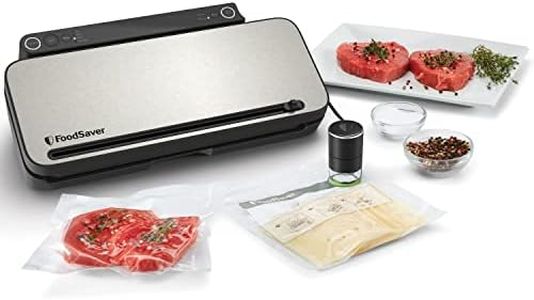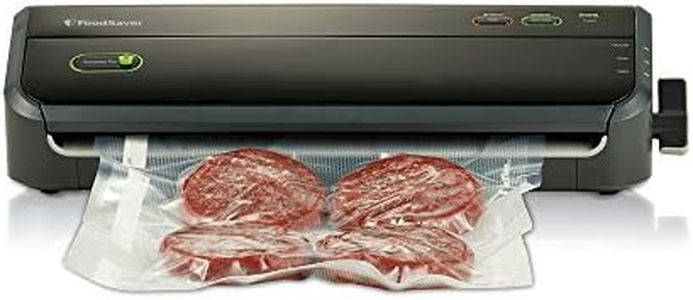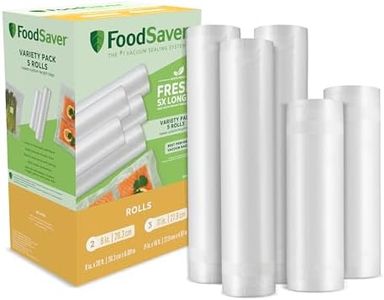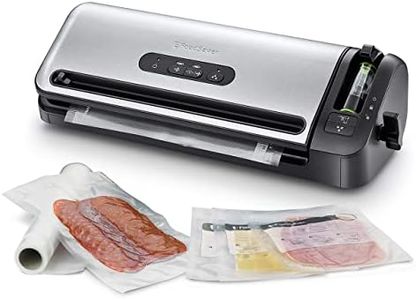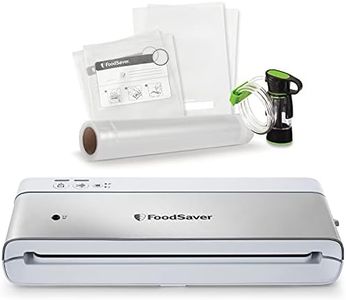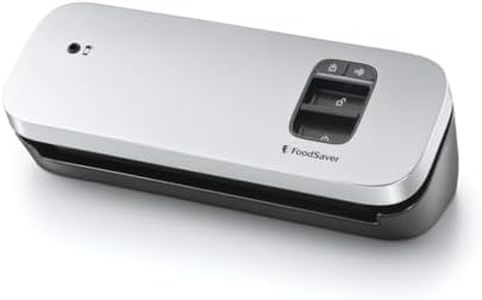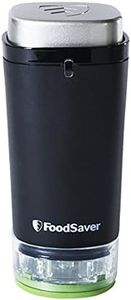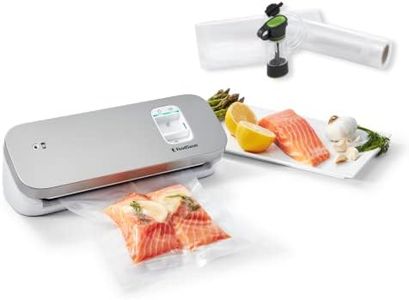We Use CookiesWe use cookies to enhance the security, performance,
functionality and for analytical and promotional activities. By continuing to browse this site you
are agreeing to our privacy policy
10 Best Foodsaver Vacuum Sealers
From leading brands and best sellers available on the web.Buying Guide for the Best Foodsaver Vacuum Sealers
Choosing the right vacuum sealer can help you save money, reduce food waste, and keep your meals fresher for longer. When shopping for a food vacuum sealer, it's important to think about how often you’ll use it, what kinds of food you want to seal, and your available storage space. By understanding the main features and their impact, you’ll be able to pick a model that best suits your daily needs and routines.Sealing MethodVacuum sealers mainly come in two types: external and chamber machines. An external sealer is the more common style, where bags are placed with the open end in the machine. These are great for most home users who want to seal leftovers or bulk foods. Chamber sealers work by placing the entire bag inside the machine and tend to be faster and handle liquids better, but are usually larger and heavier. Pick the method that matches your sealing frequency and the types of foods (solid vs. liquid-rich) you plan to store.
Suction PowerThe suction power determines how much air the sealer can remove from a bag, affecting how well the food is preserved. This is usually expressed in inches of mercury (inHg) or just as a comparative number. High suction means tighter seals and longer preservation—ideal if you’re storing meat, fish, or want to freeze food for months. Moderate suction works well for pantry items or simple leftovers. Choose a higher suction model if you want maximum food longevity, or a basic one for occasional, short-term use.
Bag CompatibilityDifferent sealers are compatible with various bag sizes and styles, such as pre-cut bags, rolls you cut to size, and some even seal containers. Consider what kinds of foods you’ll be sealing and the portion sizes you prefer. Adjustable width or support for multiple bag types and sizes offers more flexibility, especially for bulk storage or individualized servings. Users with varied needs should choose a model that supports a wide range of bags.
Seal Width and StrengthThis refers to how wide and durable the airtight seal is. A wider seal (often 3mm or more) offers better protection against leaks and freezer burn, especially important for sauces or foods stored long-term. Thinner seals are often fine for dry snacks or pantry items. If you plan to vacuum-seal moist foods or expect rough handling during storage, opt for a sealer with a wide, strong seal.
Ease of Use and CleaningEase of use includes features like one-touch operation, indicator lights, and easy bag alignment. For cleaning, removable drip trays catch spills, and simple design makes maintenance easier. If you’ll use your sealer regularly, these features save time and reduce hassle. Beginners or those who want low-maintenance appliances should seek out straightforward, easy-to-clean models.
Size and StorageVacuum sealers range from very compact to quite large. If you have limited counter or cabinet space, a small, lightweight unit is preferable. Larger models often offer more power or advanced features but may be harder to store. Choose according to the space you have available and how often you’ll want to access your vacuum sealer.
